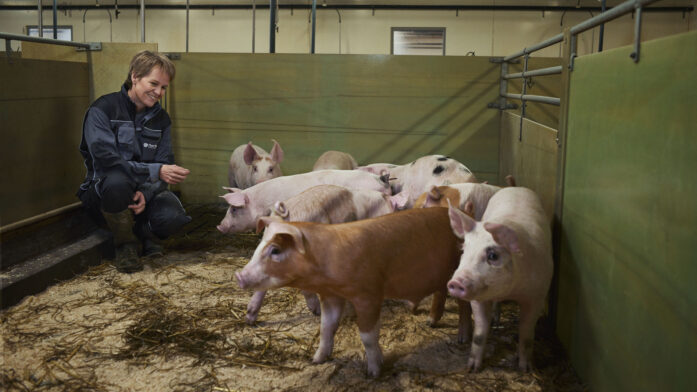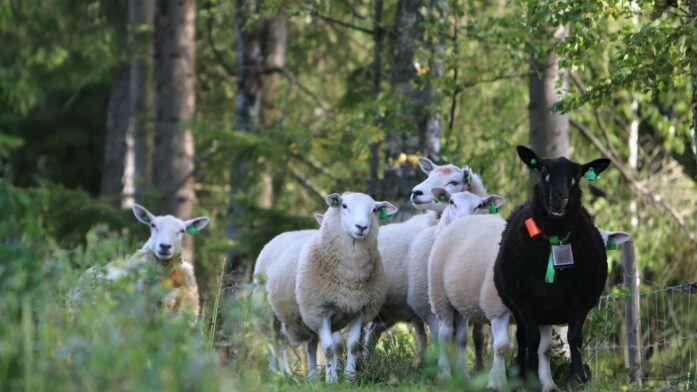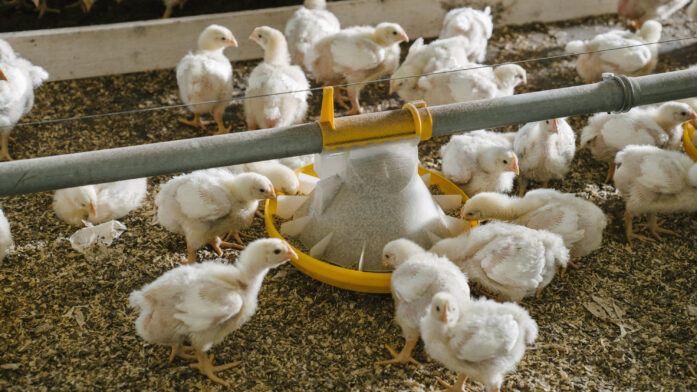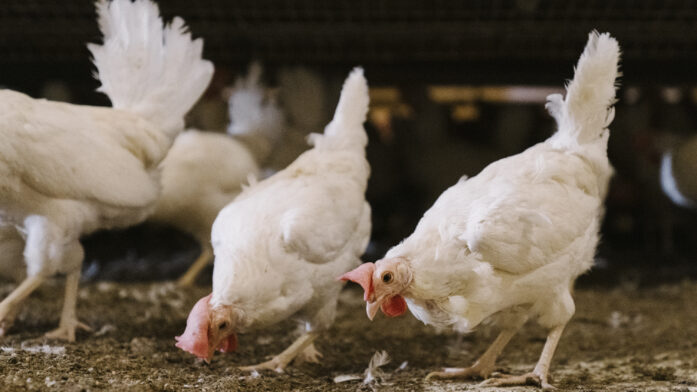Animal welfare at the farm
Farmers supplying Nortura must comply with the provisions laid down in order to maintain good animal welfare. Norway has regulations that set specific requirements as to how the animals should be treated. Nortura believes it is important to work actively to develop and improve animal health and animal welfare, rather than dealing with challenges through medication. Here you will find more information about each type of animal.

The majority of Norwegian pigs live indoors all their lives. One of the reasons is that they depend on a good and stable climate, e.g., as regards drafts and temperature. This also gives the farmer control over feeding and makes it easier to detect possible infection and disease.
Pigs are exploratory animals and have an urge to dig and search with their snouts. The farmer is therefore obliged to provide activity and rooting material so that the pig has an outlet for its behavioural needs. This applies to all Norwegian pigs in Nortura's products. Hay, straw or silage are examples of optimal activity and rooting material. It is important to Nortura that pigs get the opportunity to satisfy their need to explore and investigate. In the research project Griseløftet, we at Nortura, together with researchers at NMBU, investigate different types of material and combinations of these in order to gain further knowledge about what produces the best response in the pig.

For a minimum of 8 weeks a year, Norwegian cows and calves are outside in the open air. All cows also have their own health card. All important information about health and medication use is documented there.
Norway is among the countries that rank lowest in the world when it comes to antibiotic use. Norwegian cattle are not given antibiotics to prevent diseases; the use of hormonal growth-promoting drugs for food-producing animals is also prohibited in Norway. Nortura believes that it is important to support the fact that challenges related to animal health and animal welfare are solved through preventive work, rather than through the use of treatment with drugs.

Most Norwegian sheep and lambs graze out in the open during the summer. This is special for Norway and gives the meat a unique quality. Outdoor grazing reduces the risk of being infected by diseases, and it is good for the sheep to graze in peace. The sheep farmers regularly supervise the animals to check that everything is as it should be.
At Nortura, we have a close dialogue with our sheep farmers. We provide advice and guidance on everything from feeding, breeding, sheep control, finances and general operations, lambing, ear tagging and shearing.

Both chicken and turkeys live indoors in heated and insulated buildings. There they roam freely on litter and have access to food and water. The space requirements for chicken in Norway are among the strictest in Europe. A maximum of 36 kilos of live chicken per square metre is permitted in standard chicken production. The limit in most other countries in the EU is 39 or 42 kilos.
Nortura also has production with lower density requirements, such as the Prior chicken farm, the concept where the maximum density is 15% lower than the regulatory requirement.
Norwegian chicken and turkey are not given antibiotics to prevent disease. The Norwegian regulations for the use of antibiotics set clear requirements that the use of antibiotics for preventive purposes, so-called prophylactic antibiotic use, is prohibited. Use of hormonal growth-promoting drugs for food-producing animals is also prohibited in Norway.
Norway is in a unique position in the world context when it comes to the limited use of medicines. In 2016, Nortura phased out the use of narasin as a parasite agent in chicken feed and is now working to complete a corresponding phasing out of the parasite agent monensin for turkeys during the first half of 2022.
Part of the reason for the good animal health in poultry is that we follow the "everything in, everything out" principle. This means that a building housing chickens or turkeys only has one flock at a time, this ensures that infection is not transferred from one flock to the next.

Norwegian laying hens are generally in good health and very rarely need medication. Antibiotics are not used to prevent diseases. Growth hormones are completely prohibited in Norwegian agriculture.
In Norway, the health authorities have not registered a single case of salmonella disease from Norwegian eggs. This is an unprecedented situation in a global context.
About 97% of the laying hens in the Nortura value chain are kept in free-range systems, while 3% are in environmental housing, i.e. cages where the hens are kept in groups of 7 to 42 hens. All eggs that go to the Prior brand come from free-range or organic hens.
Free-range hens move freely within the hen house and have access to a perch, a laying box and the possibility of taking a dust bath. This also applies to hens in organic farming, except that they have a little more space, the opportunity to go outside and they eat organically grown feed. Hens in environmental housing have access to a perch, laying box and dust bath.
